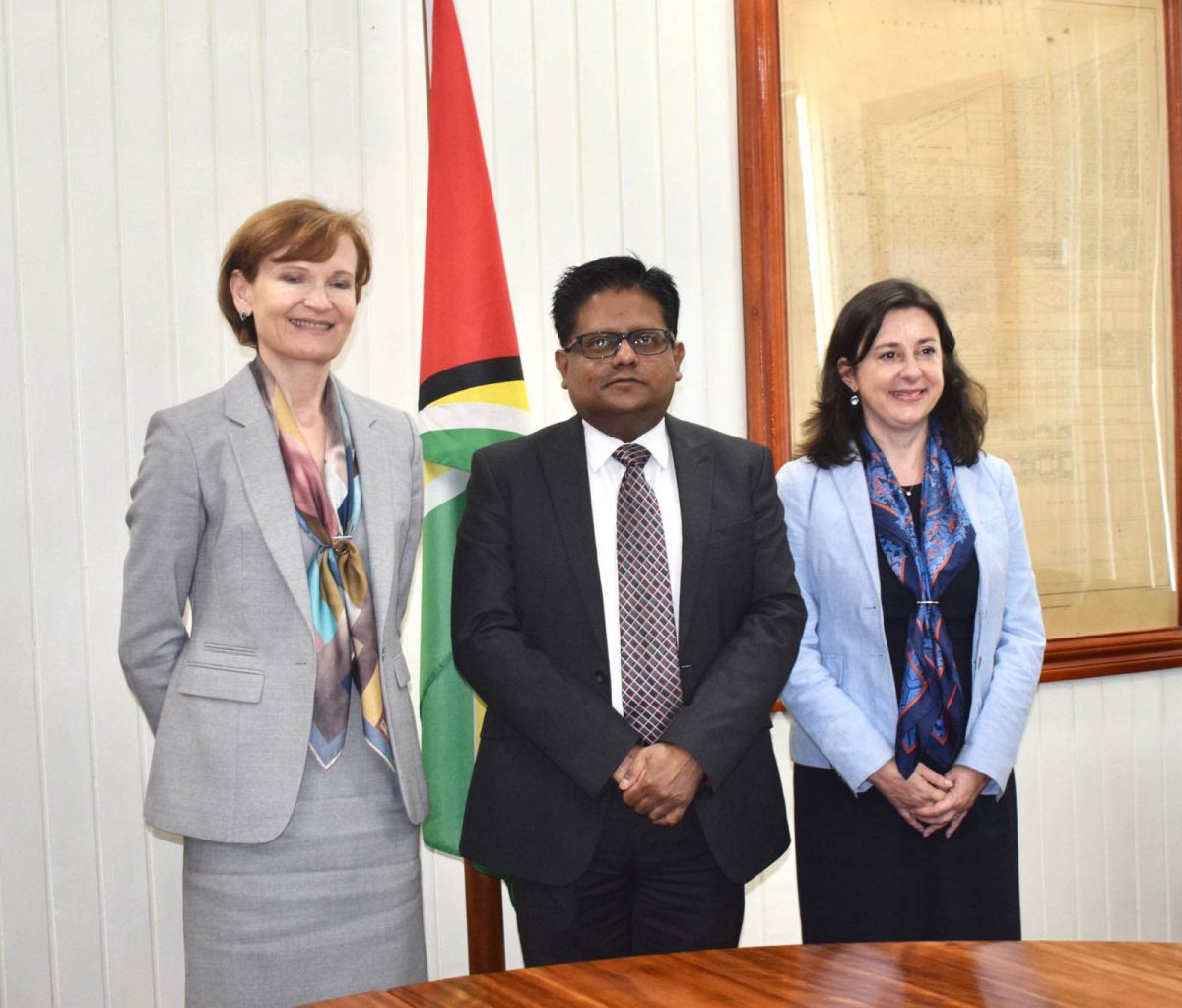Finance Minister Dr Ashni Singh yesterday met with a team from the World Bank where opportunities for enhanced collaboration were discussed.
The World Bank team was led by Country Direc-tor for the Caribbean, Lilia Burunciuc, and the new Resident Representative of the Bank for Guyana and Suriname, Dilletta Doretti. It also included Judith Green, Regional Manager, Caribbean region (IFC) and Javier Suarez, Pro-gramme leader for the Caribbean.
In a statement, the Ministry of Finance said that the initial meeting served as an opportunity for enhanced dialogue on the government’s economic objectives and priorities. It added that the potential for tapping into the opportunities provided by the bank’s assistance and lending programmes were also discussed.
Identifying some key areas that were elaborated upon, the Ministry of Finance said that it included Guyana’s Low Carbon Development agenda, human capital development and opportunities for partnership between the Government and the financial institution in other areas as capacity is expanding and evolving.
“Elaborating on the various ongoing developmental projects and on Government’s policies, Dr Singh placed emphasis on diversified economic growth, highlighting the desire for an increase in the private sector footprint of the IFC (International Finance Corporation). He alluded to a number of developmental projects in the agriculture sector which hold potential such as the corn and soya bean agriculture initiative. The IFC is the World Bank’s private sector arm.
The Senior Finance Minister further welcomed the Bank’s continued investment in human capital development as well as Guyana’s Low Carbon Development agenda, the Ministry said.
Burunciuc, according to the statement, re-affirmed the World Bank’s commitment to working closely with Guyana in promoting economic and social development. Additionally, it noted that Doretti express-ed enthusiasm at being able to support the administration’s development priorities on behalf of the World Bank.
In August 2021, the Vice President responsible for the Latin American and Caribbean Region of the World Bank, Carlos Felipe Jaramillo and team made a two-day visit to the country where they met with the government and visited a number of project sites. During that visit, the Bank reaffirmed its commitment to Guyana and assessed areas for further opportunities for expanded partnership in pursuit of the country’s national development goals.
Government said that the World Bank has been supporting several projects over the years through a number of loans and grants including a US$20 million loan for the Guyana Petroleum Governance and Management Project to boost the enhancement of legal and institutional frameworks and the strengthening of the capacity of key institutions to manage the oil and gas sector.
Additionally, the Bank loaned US$6 million to Guyana under the Guyana Payments System Project to improve the national payments system, while another US$13.3 million was loaned for the Guyana Education Sector Improvement Project to improve student learning outcomes through reform of curriculum and teaching practices.
A US$37. 9 million under the Flood Risk Management Project and US$12.5 million towards the COVID-19 Emergency Response Project were also loaned.
The ministry also informed that the Bank provided a US$7 million grant towards the Guyana Education Sector Programme Project. Under that programme monies would be expended for the improvement and learning conditions at the nursery level in selected areas while select primary schools would be targeted by increasing the use of technology-assisted learning to improve the functionality of the education management information system nationally.





